Occupational Safety Training for Weight Manufacturing
99,000 ₫
Note: The above price is calculated per person and may vary depending on the number of trainees participating in the course and market fluctuations. For more accurate pricing information, please refer to the price list or contact our consultants directly.
Occupational safety is an important issue in weight manufacturing factories and needs to be addressed promptly to ensure the health and safety of workers, as well as to enhance the reputation of businesses. The Occupational Safety Training course is an effective solution to raise awareness about accident prevention for workers involved in weight production.
Table of Contents
Toggle1. Overview of Dumbbells
a. What Are Dumbbells?
A dumbbell is a type of exercise equipment commonly found in gyms and easily used at home. It consists of a horizontal bar connecting two weight ends, usually weight plates that can be adjusted. Dumbbells come in various sizes and weights, from light to heavy, allowing users to tailor their workouts to their strength and training goals.
Using dumbbells helps enhance muscle strength, improve endurance, and develop different muscle groups in the body. Dumbbell exercises range from basic moves like single-arm and double-arm lifts to more complex exercises such as squats, lunges, and bench presses. Dumbbells can also be combined with other equipment like workout benches or resistance bands to increase training effectiveness.
Additionally, training with dumbbells improves balance, flexibility, and supports weight loss when combined with a proper diet. Therefore, dumbbells are an essential piece of fitness equipment for those aiming to maintain health and a well-balanced physique.

b. Types of Machinery Used in Dumbbell Production
- Casting Machine: This is crucial for producing the weight portion of the dumbbell. Steel, cast iron, or other metals are melted and poured into molds to form weight plates. The casting machine ensures precise shape and dimensions.
- CNC Milling Machine: Used for machining the dumbbell handle, ensuring high accuracy and smooth surface finish. CNC technology enables programming and automation, allowing mass production with precision.
- Welding Machine: In some dumbbell designs, the handle and weight plates are welded together. Welding machines ensure secure, durable joints for safe use.
- Spray Painting Machine: After machining and assembly, dumbbells are often coated with a protective layer to prevent rust and improve aesthetics. Automatic spray painting machines provide even coating and attractive finish.
- Quality Control Machine: Used to measure weight, check durability, and verify other specifications to ensure every dumbbell meets quality standards.

c. Famous Dumbbell Brands
- Rogue Fitness: One of the leading brands in fitness equipment. Rogue dumbbells are widely used in gyms and CrossFit competitions, known for their high quality, durability, and strength.
- Bowflex: Famous for multifunctional equipment and smart dumbbells. Bowflex products, such as the SelectTech line, allow easy weight adjustment for various exercises.
- CAP Barbell: Specializes in gym equipment, including dumbbells, weight plates, and other fitness tools. Known for quality and durability, suitable for both beginners and professional athletes.
- York Fitness: A long-established brand in sports equipment. York dumbbells are popular in gyms and homes thanks to sturdy designs and reliable quality.
- PowerBlock: Renowned for adjustable dumbbells, allowing quick and convenient weight changes. Their smart design makes them popular in personal training spaces.
- Ivanko: A premium brand in dumbbell and fitness equipment manufacturing. Ivanko dumbbells are made from high-quality materials, ensuring durability and long-term performance, often used in professional gyms and bodybuilding competitions.

d. Specific Jobs in a Dumbbell Manufacturing Plant
Group 1
- Executive directors, deputy directors, department heads in the dumbbell manufacturing plant.
Group 2
- Safety officers: manage plant safety, design safety procedures, monitor and enforce safe work practices.
Group 3
- Casting workers: Operate casting machines to create metal dumbbell parts according to designs. Tasks include pouring molten metal into molds and inspecting product quality after casting.
- CNC machinists: Use CNC milling machines to process dumbbell handles, ensuring precision and smoothness.
- Welders: Perform welding to join dumbbell parts securely and durably.
- Spray painters: Operate automatic spray painting machines to apply protective and decorative coatings. Tasks include surface preparation and post-paint quality inspection.
- Grinding and polishing workers: Finish dumbbell surfaces to remove imperfections and create a smooth polish before painting.
- Assemblers: Put together dumbbell components, ensuring accurate and secure assembly.
- Quality control inspectors: Check dumbbell weight, dimensions, and durability to meet quality standards before shipping.
- Packers: Package dumbbells into boxes or pallets for shipment, including labeling and quantity checks.
Group 4
- Office, service, sales, and marketing positions.
- Production management, quality control management, human resources management, materials management, financial accounting management.
- Research and development of new products, packaging design.
2. Overview of the Safety Training Course for Weight Production
Within the scope of this article, we focus on issues related to Group 3, because Group 3 is directly involved in the production process and faces the highest safety risks. Refer to other groups here
a. What is Group 3 Safety Training?
- Group 3 Safety Training consists of sessions designed to provide awareness on how to prevent occupational accidents for workers.
- The safety training course will help workers identify and avoid hazards, and minimize the risk of workplace accidents while working.
REGISTER FOR SAFETY TRAINING SERVICE
b. Training Duration
Initial safety training duration:
- The total training duration is at least 24 hours, including testing time.
- 8 hours of theoretical training on the system of policies and laws regarding occupational safety and hygiene.
- 8 hours of theoretical training on basic knowledge of occupational safety and hygiene.
- 4 hours of theoretical training on specialized content.
- 2 hours of practical training on specialized content.
- 2 hours of theoretical testing at the end of the training course.
The safety training center will schedule the training into multiple sessions depending on the workers’ availability. Typically, there will be 6 sessions over 3 days, provided that the manufacturing company arranges continuous training time.
Periodic safety training duration:
- Before the safety card expires, workers who wish to renew it must undergo a periodic safety training course, with a periodic training duration of at least 50% of the initial safety training duration.
Explanation: The total periodic safety training duration is at least 12 hours, including testing time. Upon completion of the periodic course and passing the test, workers will have their safety card renewed or extended.
c. Training Content
| No. | TRAINING CONTENT | TRAINING DURATION (HOURS) | |||
| Total | Including | ||||
| Theory | Practice | Test | |||
| I | System of policies and laws on occupational safety and hygiene | 8 | 8 | 0 | 0 |
| 1 | Overview of legal documents on occupational safety and hygiene. | 6 | 6 | ||
| 2 | System of standards and technical regulations on occupational safety and hygiene. | 1 | 1 | ||
| 3 | Specific regulations by state management agencies on occupational safety and hygiene when constructing, expanding, or renovating facilities for production, storage, maintenance, and inspection of machinery, equipment, materials, and substances subject to strict safety and hygiene requirements. | 1 | 1 | ||
| II | Basic knowledge of occupational safety and hygiene | 8 | 8 | 0 | 0 |
| 1 | Basic knowledge of hazardous and harmful factors in the workplace. | 4 | 4 | ||
| 2 | Methods to improve working conditions. | 1 | 1 | ||
| 3 | Safety culture in production and business. | 1 | 1 | ||
| 4 | Rights and obligations of employers and employees; policies and regimes on occupational safety and hygiene for employees; functions and duties of the safety and hygiene network. | 1 | 1 | ||
| 5 | Safety and hygiene regulations, signs, and instructions; use of safety equipment and personal protective equipment; skills in first aid for occupational accidents and prevention of occupational diseases. | 1 | 1 | ||
| III | Specialized training content | 6 | 4 | 2 | 0 |
| Comprehensive knowledge of machinery, equipment, and substances that generate hazardous and harmful factors; analysis, assessment, and risk management regarding occupational safety and hygiene; safe working procedures with machinery, equipment, and substances subject to strict safety and hygiene requirements. | 6 | 4 | 2 | ||
| IV | Testing safety training content at the end of the course | 2 | 2 | 0 | 0 |
| Total | 24 | 22 | 2 | ||
See more training content for the 6 groups
d. Safety Card
After completing the occupational safety training course and passing the test, workers will be issued a safety card (commonly referred to as a Group 3 safety certificate).
The Group 3 safety card will clearly display information such as: full name, date of birth, specific job, and working environment. It will also include the training date, red stamp, and signature confirming course completion.
According to regulations in Clause 2, Article 24 of Decree 44/2016/NĐ-CP, there are 2 cases:
- If the employer and employee have a labor contract, the employer must sign, stamp, and seal the safety card for the Group 3 trained worker after completing the course and passing the test.
- If the worker is a freelancer or seasonal worker with no labor contract, the training unit must sign, stamp, and seal the safety card after the worker completes the course and passes the test.

3. Identifying Hazards Affecting Workers in Weight Production
- Hazards from machinery and equipment:
- Risk of entrapment or cuts: Casting machines, CNC milling machines, and welding machines have moving parts or high temperatures that can cause harm. Workers may get trapped or cut if not careful.
- Hazards from chemicals and materials:
- Risk from paint chemicals: Chemicals used in spray painting can be harmful if workers come into direct contact or inhale them.
- Hazards from weight and lifting operations:
- Risk of musculoskeletal injuries: Lifting heavy weights can cause back injuries and damage to other body parts if not done properly.
- Hazards from noise and vibration:
- Risk of hearing loss: Noise from machinery and processing can damage hearing if exposed for long periods.
- Hazards from high temperatures:
- Risk of burns: Casting and welding machines can cause burns if workers come into contact with hot surfaces or molten metal.

4. Safety measures when participating in weight production
- Safety training and instruction:
- Periodic training: Provide occupational safety training courses for employees, including knowledge of safe production processes, machinery operation, and the use of protective equipment.
- On-site training: Conduct on-site training sessions so employees clearly understand how to use machinery and equipment safely.
- Use of personal protective equipment (PPE):
- Protective clothing: Provide and require employees to wear protective clothing, safety shoes, cut-resistant and heat-resistant gloves.
- Hearing protection: Provide noise-cancelling earmuffs or earplugs to protect hearing from machinery noise.
- Eye and respiratory protection: Use safety goggles to protect eyes from metal fragments and respirators when working with chemicals.
- Regular maintenance and inspection of machinery:
- Machine maintenance: Perform regular maintenance to ensure machinery operates correctly and safely.
- Safety inspection: Periodically check safety devices on machinery such as sensors and protective guards to ensure they operate effectively.
- Regularly organize occupational environment monitoring in factories, collect and analyze harmful factors to workers, and adjust to reduce hazards to prevent occupational diseases.
- Workplace environment management:
- Good ventilation: Ensure the ventilation system works effectively to minimize toxic gases and dust in the air.
- Neat arrangement: Keep the workplace tidy and organized to reduce the risk of accidents caused by slipping, tripping, or entanglement.
- Chemical and material management:
- Safe storage: Store chemicals used in production in separate, safe areas with clear warning signs.
- Proper use: Ensure employees know how to use and handle chemicals safely, including handling incidents related to chemicals.
- Implementation of occupational safety regulations:
- Compliance: Ensure all employees comply with the factory’s occupational safety regulations and the law.
- Frequent safety inspections: Conduct regular safety inspections to detect and promptly address potential hazards.
These safety measures not only protect workers’ health and lives but also improve production efficiency and product quality, contributing to a safe and professional working environment.
5. Benefits of occupational safety training for weight production
An Toàn Nam Việt provides your business with the following excellent benefits after completing occupational safety training courses as stipulated in Decree 44/2016/NĐ–CP on occupational safety and hygiene for companies, factories, and enterprises.
- Workers can identify potential risks of workplace accidents and take preventive measures to avoid them.
- Your business can establish risk prevention measures in production, operation, and maintenance.
- Reduce costs arising from safety risks in the workplace.
- Uninterrupted production will help increase productivity and product quality.
- Ensure compliance with occupational safety laws, avoiding legal risks.
- Create credibility and professionalism in all aspects, thereby elevating your brand.
Nam Việt’s training courses are a solution to prevent external factors that may harm individuals, helping them avoid dangers that could lead to injury or, worse, death.
REGISTER FOR OCCUPATIONAL SAFETY TRAINING SERVICE
6. Customer Feedback After Completing the Occupational Safety Training for Weight Production
An Toan Nam Viet has accumulated many years of experience in the mission of accompanying many businesses in Vietnam in general and in the southern provinces in particular. This responsibility is extremely valuable to Nam Viet, which is why our Occupational Safety Training work is always emphasized and becoming increasingly professional. The driving force for An Toan Nam Viet’s growth to this day comes from both the positive feedback and constructive suggestions from businesses. Below are the responses from our valued partners we have served.
Bac Nam E&C Investment and Construction Joint Stock Company
“This was my first time using An Toan Nam Viet’s services, and I was very surprised by the enthusiastic 24/7 support from the consulting team. The class organization was very quick and convenient for our company. Thank you so much for Nam Viet’s service!”
Hoa Dat Construction and Trading Joint Stock Company
“Nam Viet’s services have greatly helped us simplify occupational safety and complete the necessary safety documentation for our work process. The consulting team was enthusiastic and responded promptly to our questions. 5 stars for Nam Viet.”
See more customer interviews after using the service of An Toan Nam Viet
7. Occupational Safety Training Capacity of An Toan Nam Viet
An Toan Nam Viet is a reputable and high-quality occupational safety training center in Vietnam today, with training sessions continuously conducted at manufacturing workshops, factories, or construction sites nationwide (63 provinces and cities in Vietnam).
REGISTER FOR OCCUPATIONAL SAFETY TRAINING SERVICE
Occupational Safety Training License
- An Toan Nam Viet has been inspected and certified by the Department of Occupational Safety of the Ministry of Labour – Invalids and Social Affairs as meeting the conditions to conduct occupational safety and hygiene training activities. This further strengthens our capacity in occupational safety training.

Materials and Lectures
- Before occupational safety training materials are used in occupational safety training courses, they are reviewed and approved to ensure the lectures are accurate in knowledge and effective in application.
- The teaching methods of our instructors are standardized according to An Toan Nam Viet’s training standards, which are methods researched and developed by experts in occupational safety and hygiene training to achieve the highest learning effectiveness for trainees.
Facilities
- Controlling classroom factors that affect the training process will increase teaching efficiency and knowledge absorption of learners.
- Facilities supporting the training course are always spacious classrooms meeting standards for area, lighting, training equipment, etc.
8. Nationwide Reputable and Quality Safety Training Center
At An Toan Nam Viet, we always prioritize our dedication to occupational safety training. For us, imparting the knowledge for workers to protect themselves, so they have the safety foundation for their livelihoods, is a contribution to building the nation.
To ensure effective training, we prepare carefully and meticulously for even the smallest details—from tools, teaching equipment, and curriculum to sound and lighting.
Our occupational safety training instructors are experts with many years of experience in the field. They even have research projects on identifying hazards in all industries and ways to prevent them.
The lectures are drawn from real-life practice and delivered in a vivid, easy-to-understand way to workers. These factors help learners feel comfortable during the training sessions and absorb the knowledge effectively. Of course, the knowledge imparted is always aligned with Decree 44/2016/NĐ-CP.
From there, workers can grasp many measures to prevent dangers and protect themselves, as well as apply them appropriately in their work.
Our safety training center is proud to be a reputable and professional provider of occupational safety training services with the following advantages:
- Competitive training costs while maintaining training quality.
- Flexible training schedules adapted to the company’s production situation.
- Quick and lawful procedures for issuing occupational safety training certificates.
- Instructors with many years of professional experience.
- Classrooms are controlled for factors affecting training, increasing teaching efficiency and knowledge absorption.
- Lectures tailored to the occupational safety work at enterprises.
- An Toan Nam Viet works wholeheartedly and professionally to support customers accurately and promptly.

9. Additional Reference Materials for Occupational Safety Training in Weight Production
- Occupational Safety Materials for Weight Production
- Occupational Safety Training Document Set
- Occupational Safety Training Test Set
- Occupational Safety Training Curriculum for Weight Production (lifting weights)
- Occupational Safety Multiple-choice Test for Weight Production (lifting weights)
No comments yet

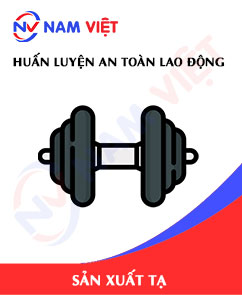

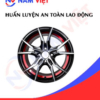



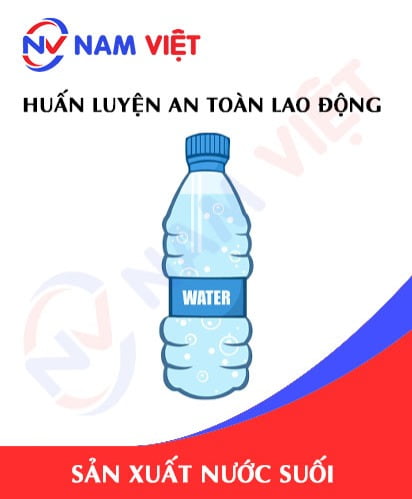


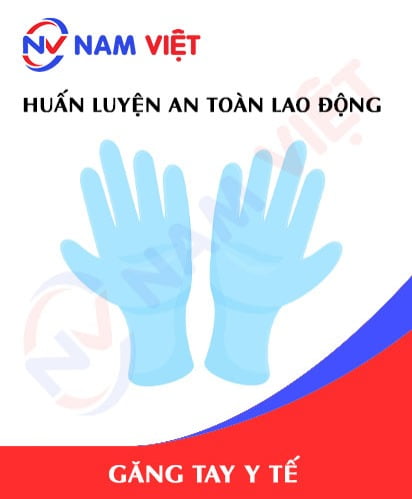
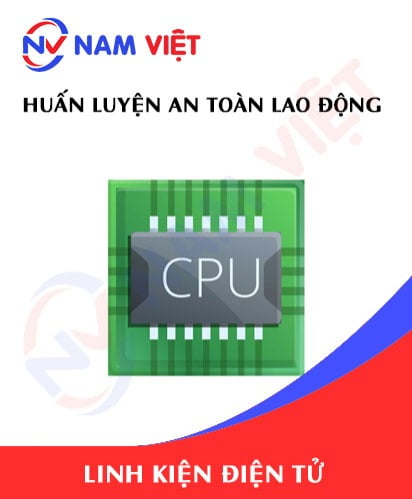



Review Occupational Safety Training for Weight Manufacturing
There are no reviews yet.